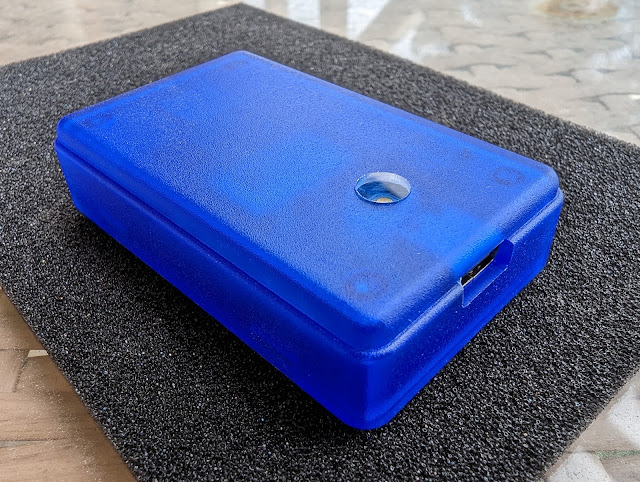It has been while since my last update. A few things have been happening behind the scenes. This post announces IGC validation for the Bluefly and describes the latest firmware and software.
 |
IGC Validation
I am happy to announce that validation of Bluefly XBF signed files is now officially supported by the FAI-CIVL open validation server. Validation for IGC files is required for some competitions, and importantly for many of us is used by XCContest.
A few years ago some models of the Bluefly got IGC tracklog recording. But until October this year the only way to validate to the file was to download it via GPS Dump as described in this post.
For the technically minded, the IGC signing process is handled in the hardware. The IGC file data is stored in onboard NOR Flash memory using a proprietary file format as the $GPGGA and $GNGGA sentences are read from the onboad GPS and processed into B records. The IGC file is signed on the Bluefly using the XBF protocol when recording has stopped (when the Bluefly is shut down).
The Bluefly IGC file can be downloaded using the BFVDesktop application available from https://www.blueflyvario.com/software/ using the procedure describe in this post. Users can connect the Bluefly to a PC and it appears as a serial port. The BFVDesktop application communicates with the Bluefly using commands over the serial port, including commands to list files and download them individually. Users can also format the NOR Flash memory.The following models include IGC recording. These are all based on the same codebase and use the same IGC format and memory protocol, with the relevant updates to the IGC header to reflect hardware and firmware versions.
- BlueFlyVario_Bluetooth_GPS_IGC_v23 (current model released May 2023)
- BlueFlyVario_USB_TTL_GPS_IGC_v22 (current model released May 2022)
- BlueFlyVario_Bluetooth_GPS_IGC_v22 (previous model released May 2022)
- BlueFlyVario_Bluetooth_GPS_IGC_v12.3 (previous model released June 2021)
M70 Firmware Update (v22 and v23 models)
I have also recently completed testing new firmware for the v22 and v23 models. I only recommend updating firmware if there is a new feature you want to try or if you are not happy with the performance of your vario.
The key changes are:
- Updated the $XCTOD sentence used to send voltage and temperature data from the Bluefly to XCTrack
- Adds a checksum to make it more robust (see here for more explanation).
- Fixes a battery voltage error from some firmware versions.
- Added a new beepDutyCycle hardware setting. You might want to use this to change the nature of the Bluefly beeps, or perhaps to prolong the battery life.
- By default when the Bluefly beeps in lift the ratio of beep to silence is 1:1.
- It beeps faster when you go up, but still the length of the beep and silence is the same.
- By adjusting the beep duty cycle you can shorten the beep to silence ratio.
- Start by experimenting with the setting at 0.5 or 0.25.
- Rebuilt the IGC Flash memory writing code.
- For some combination of device and Bluefly there were intermittent errors associated with the periodic writing of track data to the onboard flash memory.
- Flash writing tasks now run in the background.
- v23 Models:
- Bluetooth - BTH_USB_23.1.470.hex
- Bluetooth_GPS_IGC - BTH_GPS_IGC_23.1.570.hex
- v22 Models:
- Bluetooth - BTH_USB_22.2.470.hex
- Bluetooth_GPS_IGC - BTH_GPS_IGC_22.2.570.hex
- TTL_GPS - TTL_GPS_22.2.270.hex
- USB_TTL_GPS_IGC - USB_TTL_GPS_IGC_22.2.670.hex
- The new beepDutyCycle setting.
- An included run.sh script for running the application on Mac OS. You should read this knowledge base article for more information.

